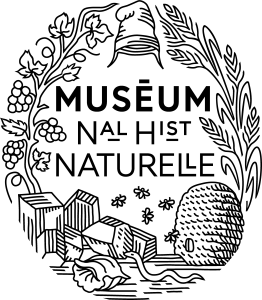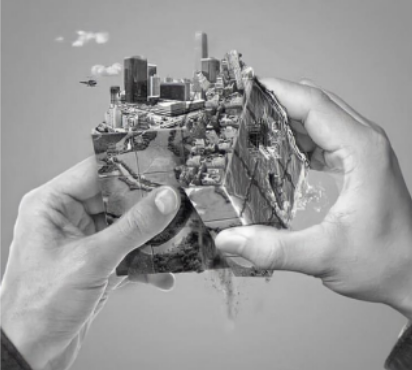Keywords: Resilience, complexity, urban planning, living world
If we take time to look around us, to peel back the layers of our urban environment and to examine the different patterns composing it, we can plan complex and resilient cities through an interdisciplinary and inclusive urban design process. Based on the intertwined narratives of multiple disciplines and the interrelation between the different actors of the living world, this approach presents a new chapter in the world of planning and construction.
For some years, all fields have felt a tension between an approach that intends to train good specialists, with knowledge and skills geared to adaptability and life-long learning, and an approach that attempts to focus, specialize, and deepen knowledge with training in specific skills. Faced with the increasing complexity of the current issues, expectations and decision-making methods have changed profoundly. The status quo is becoming more and more outdated and it is no longer in phase with reality.
A study conducted by North American researchers showed that scientific articles that draw on several disciplines have more impact than others. Over the last forty years, and more specifically since the publication of The New Production of Knowledge1, interdisciplinarity has been considered a positive practice to be encouraged. So transposing it and integrating it into land planning and urban design could be beneficial. The combination of methods and perspectives associated with several disciplines can resolve the resolution of complex issues that the disciplines taken in isolation cannot solve2.
Currently, we are living a moment of synthesis fertilized by history, science, society, culture, anthropology, ecology, climate, art-. Territorial imbalances are complex and numerous. Simplistic and compartimentalized fields cannot manage their future. It’s time to deconstruct the ancient paradigm by calling for constant renewal to “bind”, “unbind”, “shape” and “be shaped” with and by Nature and each other.
Urban design has been constantly evolving, notably in the direction of growing interdependence. It is a question of bringing together territories, ecosystems, people of different origins and reckoning with the other living species on the basis of common projections, visions and cohabitation.
By linking the living world, strengthening collaboration across sectors and land planning startegies, we can create an ecosystemic narrative that preserves the local historical heritage, both natural and cultural and that connects the different actions present on the territory while defining their transition. This process will not only root us in a sense of belonging, of kinship but also enhances our sensitivity by sharpening our awareness to include many stakeholders in order to build the urban future together.
Moreover the climatic, sanitary, economic and social crises that have shaken our society in recent years are pushing us to constantly rethink methodologies, models and tools to shape our environment in order to adapt them to the ever more complex challenges of our contemporary world. This includes the need to renew an ethic to guide our emerging urban future, an ethic of freedom and of responsibility. An ethic that, let us repeat, will rely on sharing. As a result, we will create places where all the living world can lead full, healthy decent lives. This will be more plausible when we mobilize the skills needed to build a better future: to seek out, identify, and transmit the skills that prepare the stakeholders of today and tomorrow to transform their world.
As all we know, building cities requires a complex approach that includes many parameters and it is very hard to conceive without having an efficient framework that includes all the specialities; we need teams made up of scientists, ecologists, architects, urban planners, politicians, historians, economists, from the non profit, public and private sectors so we can have the full spectrum, from prevention to detection, preparedness, response management and contribute to advance equitable and holistic solutions. Therefore, developing partnership mechanisms is essential to ensure a resilient building process.
Building resilience is not a task of a single actor. We need governements creating the right policies, businesses to take on some of the risk, architects and urban planners to design process communities that are flexible and responsive organisations with core skills to cope.Because your opinion matters also, we’d like to hear your thoughts on how you can collaborate in urban planning and what you think urban environments will look like in the future. Please post your ideas in the comments section below.
Imen GHALEM
1.« The New Production of Knowledge : the Dynamics of Science and Research in Contemporary Societies », M. Gibbons et al., Sage, 1994.
2. «Approaches to Understanding and Measuring Interdisciplinary Scientific Research (IDR) : A Review of the Literature », C.S. Wagner et al., J.Informetrics, 2010, 5: 14-26.

